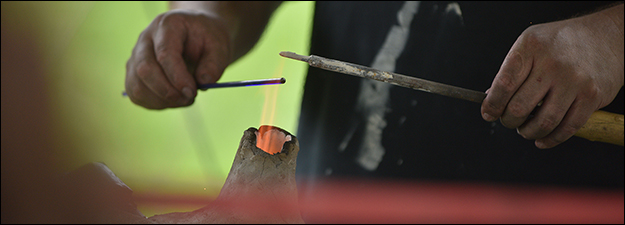With Nicholas Watson, Middle Time: Past, Present, and Future
Sponsoring Organization(s)
Harvard English Dept. Medieval Colloquium
Organizer Name
Helen Cushman
Organizer Affiliation
Harvard Univ.
Presider Name
Aparna Chaudhuri
Presider Affiliation
Harvard Univ.
Paper Title 1
The Indeterminate Present: 698, 1066, 1381
Presenter 1 Name
Cynthia Turner Camp
Presenter 1 Affiliation
Univ. of Georgia
Paper Title 2
Imagining God's Foresight: The Shape of Visionary Encounter in Julian of Norwich's A Revelation of Love
Presenter 2 Name
Anna Kelner
Presenter 2 Affiliation
Harvard Univ.
Paper Title 3
"Now": Stephen Batman's Tropological Middle Time
Presenter 3 Name
Ryan McDermott
Presenter 3 Affiliation
Univ. of Pittsburgh
Paper Title 4
Sapientia: The Medieval Invention of the Secular
Presenter 4 Name
Nicholas Watson
Presenter 4 Affiliation
Harvard Univ.
Start Date
14-5-2016 10:00 AM
Session Location
Bernhard 210
Description
As Carolyn Dinshaw would remind us, time is a product of multiple styles of representation. Time can be recursive (the seasons), or it can map one temporality onto another (the liturgy). It can even be imagined as moving towards its own ending (the apocalypse), either by the slow ticking of days or the rush of a visionary leap, one that moves from the time of the present to the end times.
This panel suggests that the idea of “middle time,” a notion that encompasses both scholarly constructions of the medieval past as “in the middle,” and medieval conceptions of that aspect or quantity of time lying between past and future, might prove useful as a tool for scholarly communication with the medium aevum. If the Middle Ages are understood by modern historiogrpahers as “intermediate,” do they interrupt, suspend, or join the time periods that come before and after them? Could those late medieval writers who inhabit spaces of the secular and the eternal, the historical and the prophetic (for instance, Julian of Norwich, John Mandeville, Margery Kempe, or William Langland) be said to write in a “middle” mode? How might contemporary scholars work with models of temporality from the past —and of the past—to better understand, as Nicholas Watson has put it, the “rich exchanges between present and past that are an often-repressed feature of our work?”
Helen Cushman
With Nicholas Watson, Middle Time: Past, Present, and Future
Bernhard 210
As Carolyn Dinshaw would remind us, time is a product of multiple styles of representation. Time can be recursive (the seasons), or it can map one temporality onto another (the liturgy). It can even be imagined as moving towards its own ending (the apocalypse), either by the slow ticking of days or the rush of a visionary leap, one that moves from the time of the present to the end times.
This panel suggests that the idea of “middle time,” a notion that encompasses both scholarly constructions of the medieval past as “in the middle,” and medieval conceptions of that aspect or quantity of time lying between past and future, might prove useful as a tool for scholarly communication with the medium aevum. If the Middle Ages are understood by modern historiogrpahers as “intermediate,” do they interrupt, suspend, or join the time periods that come before and after them? Could those late medieval writers who inhabit spaces of the secular and the eternal, the historical and the prophetic (for instance, Julian of Norwich, John Mandeville, Margery Kempe, or William Langland) be said to write in a “middle” mode? How might contemporary scholars work with models of temporality from the past —and of the past—to better understand, as Nicholas Watson has put it, the “rich exchanges between present and past that are an often-repressed feature of our work?”
Helen Cushman

